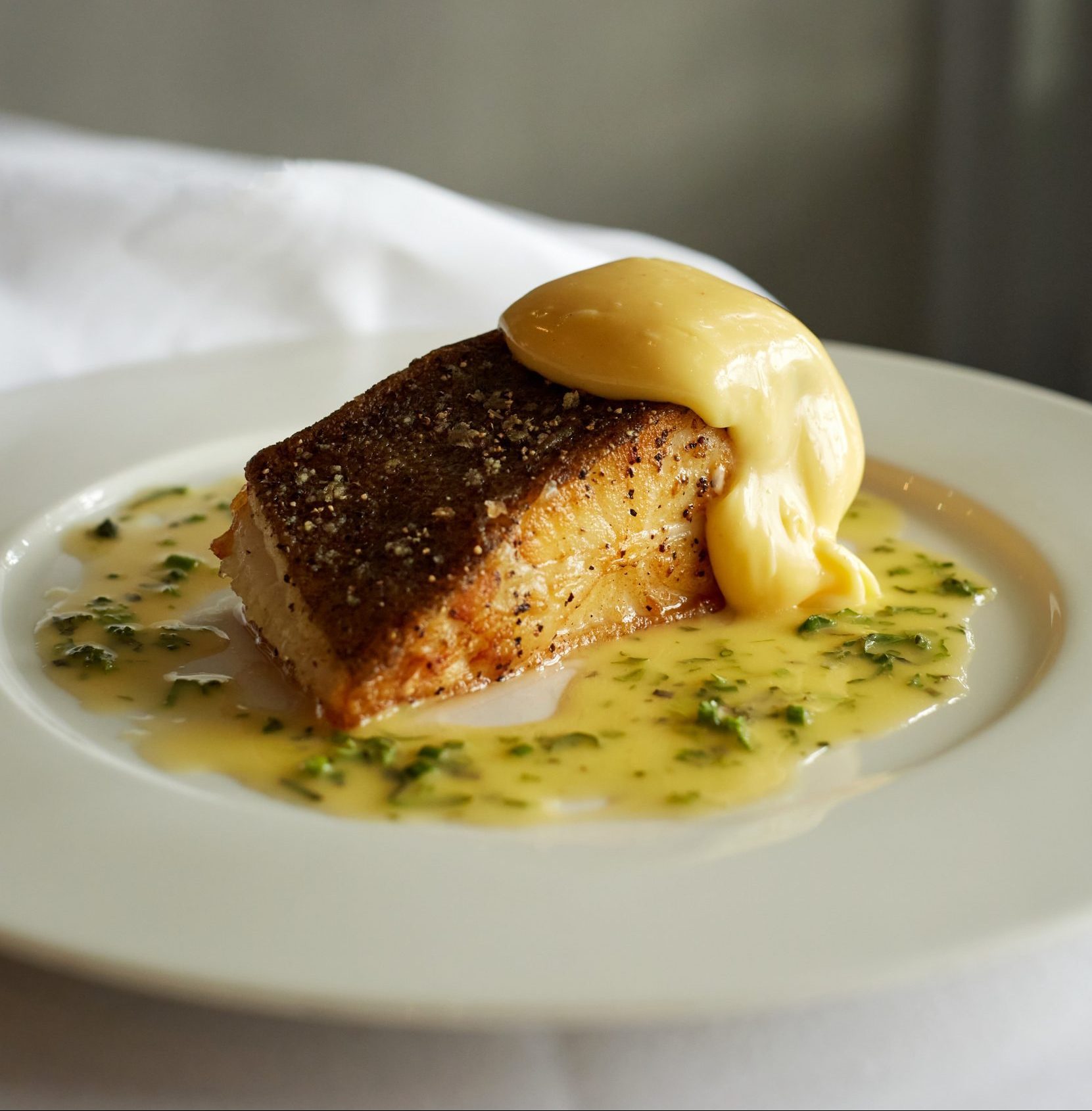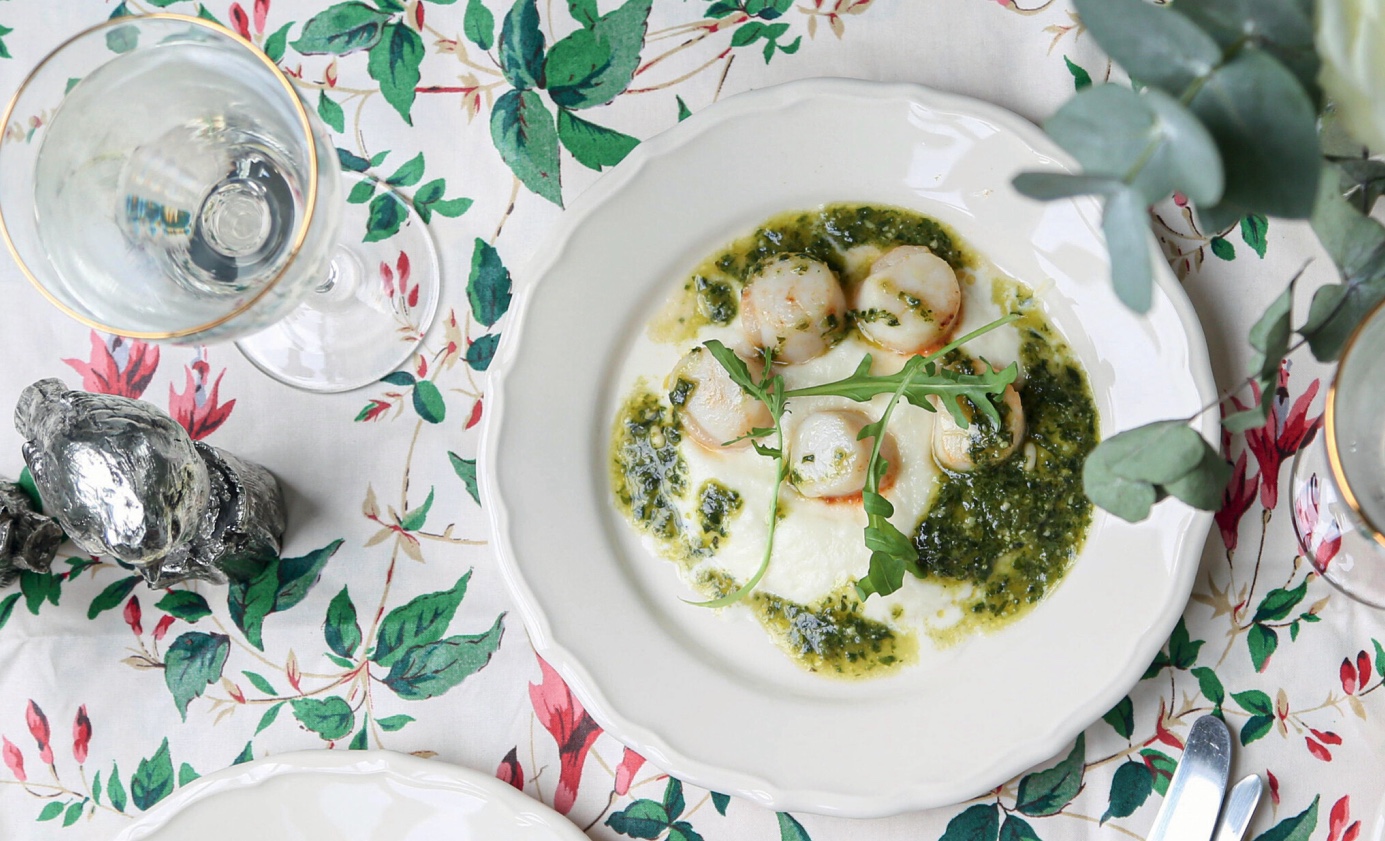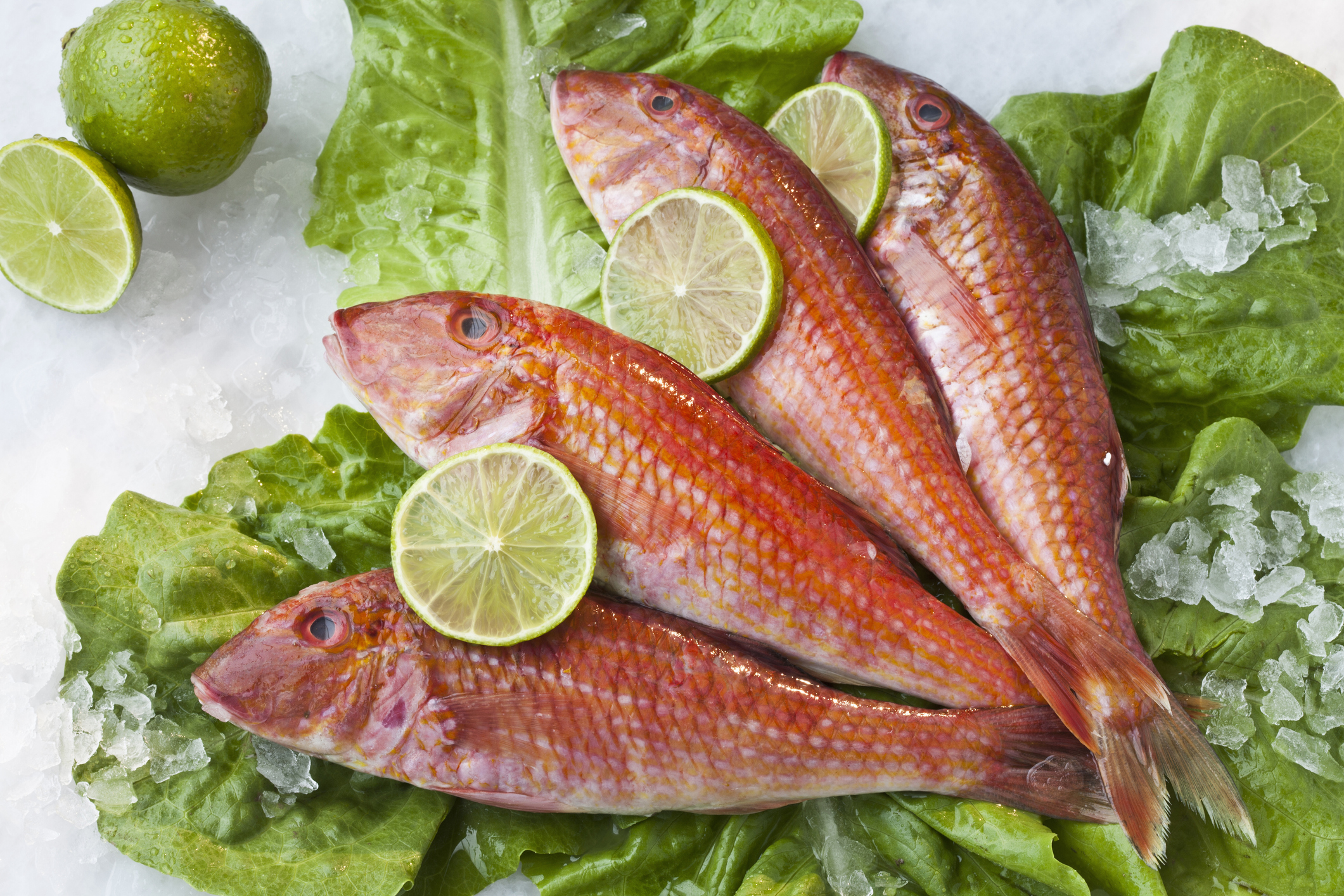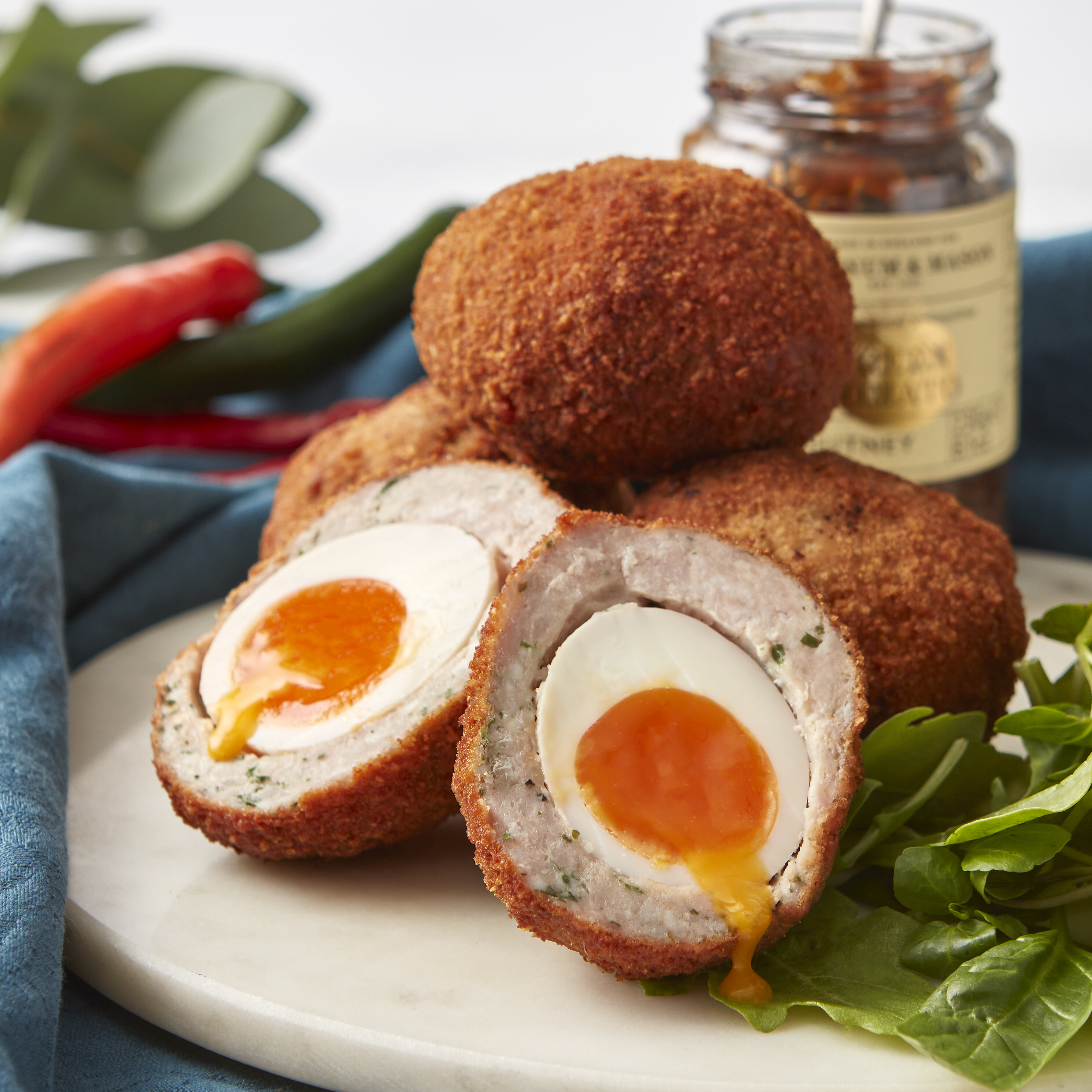How to make Rick Stein’s turbot with hollandaise — and why you should never make it with a perfectly fresh fish
A versatile Old Master, turbot is a flat fish so eternally appealing that it commands its own cooking vessel, says Tom Parker Bowles, who also shares his favourite turbot recipe: Rick Stein's turbot-powered last supper dish.


Despite its strange, slightly comical appearance — cross-eyed, with a sulkily jutting lip — turbot has always been the most regal of fish. It may look cartoonish, but, when it comes to taste, it’s very much an Old Master — rich, elegant and lusciously textured, a favourite of chefs everywhere. The Roman Emperor Domitian was so obsessed with it that, rather than simply trusting his cooks, he once asked the entire senate for some culinary inspiration. History doesn’t record its response. It was a perennial fixture on the royal table, too, and a particular favourite of Edward VII (most foods were).
For the true turbot obsessive, a turbotiere — a vast (and vastly expensive) diamond-shaped pan in which to simmer your fish — is every bit as essential as a sharp knife. Jean Anthelme Brillat-Savarin, that great eater and philosopher, tells the tale of turning up to dinner with friends, only to find that they lacked a turbotiere and were about to commit that most heinous of culinary crimes — hewing the beast in half. Quelle horreur! Luckily, our plucky hero flew to the rescue, placing a wine pannier above a fire, strewn with herbs, before gently lowering the fish into a brass washtub and covering it with a small metal bath, weighed down with sand. An hour later, a perfectly steamed specimen emerged. The day was saved and dinner was served.
Alan Davidson, diplomat, scholar and author of some of the greatest piscine tomes ever written (including Mediterranean Seafood, North Atlantic Seafood and Fish and Fish Dishes of Laos), understood the importance of this particular piece of kit. ‘It is a venial extravagance,’ he smiled, ‘to acquire a turbotiere, as I did before I ever owned a frying pan, with which to do it honour.’
"One thing you don’t want is a perfectly fresh turbot — they need a day or two to allow the flavour to develop and the flesh to firm up"
Part of the turbot’s eternal appeal lies in its versatility. There’s a glorious depth of flavour, full fathom five, but this is a fish that can stand up to some serious sauces. Like hollandaise (see recipe below) or lobster, a favourite of Francatelli and Escoffier, made with tomalley (or liver), the coral, cream, butter and fish stock. One of the great modern dishes comes from Tomos Parry, who named his first restaurant, Brat, after the old slang for turbot. He cooks it whole, over glowing embers, occasionally spritzing the skin with vinegar. Heaven.
In an ideal world, you would do the same on the barbecue. But that’s a mainly fair-weather affair and, seeing that most of us possess neither turbotiere nor the space in our ovens to fit a big ’un, there’s no shame in cutting them into fat tronçons.
Farmed turbot are perfectly all right, but wild is where the true beauty lies (albeit at a price). Found from the Mediterranean right up to Iceland and Norway, they lurk on the seabed, perfectly camouflaged by their skin (scattered with bony bumps called tubercles), awaiting their lunch. Which is made up of pretty much anything they hunt or ambush, from crabs and small fish to mussels and wriggling sand worms.
One thing you don’t want is a perfectly fresh turbot. As do Dover sole and skate, they need a day or two to allow the flavour to develop and the flesh to firm up. Because, when you’re paying this much for a fish, nothing less than perfection will do.
Sign up for the Country Life Newsletter
Exquisite houses, the beauty of Nature, and how to get the most from your life, straight to your inbox.
Recipe: Rick Stein’s turbot with hollandaise sauce
I recently interviewed Rick Stein, who is every bit as lovely as he seems. I asked him about his last supper. ‘Turbot with hollandaise sauce,’ he answered, without hesitation. I can see why. A few days later, he cooked this turbot recipe for the opening dinner at the Braemar Literary Festival in Aberdeenshire. It was sublime.
Ingredients
Serves 4
- 25g unsalted butter
- 4 x 225g–275g tronçons of turbot
- 85ml fish stock
- 1tspn chopped fresh fines herbes: parsley, French tarragon, chives, chervil
- ¼tspn Thai fish sauce
- Juice of half a lemon
- Sea-salt flakes
- Freshly ground black pepper
For the hollandaise sauce
- 2tbspn water
- 2 egg yolks
- 225g clarified unsalted butter warmed
- 1½tbspn lemon juice
- A good pinch cayenne pepper
- ¾tspn salt
Method
Preheat the oven to 230˚C/450˚F/gas mark 8.
Melt the butter in a large, ovenproof frying pan and, when it is foaming, add the tronçons of turbot and cook quickly on either side until lightly browned. Season the white sides with salt and pepper, turn them dark side up and season once more. Transfer the frying pan to the oven and roast for 15 minutes.
Meanwhile, for the hollandaise, put the water and the egg yolks into a glass or stainless-steel bowl set over a pan of simmering water, making sure that the base of the bowl is not touching the water. Whisk until the mixture is voluminous and creamy.
Remove the bowl from the pan and gradually whisk in the clarified butter until thick and moussey. Whisk in the lemon juice, cayenne pepper and the salt.
To make the sauce, combine the fish stock, the fines herbes, the Thai fish sauce, the lemon juice and the remaining butter in a small pan, season and bring to the boil.
Arrange the tronçons on four warmed plates and just cover the top of each with the fines herbes sauce. Spoon the hollandaise onto the plate against one side of each tronçon.
Serve with some plainly boiled new potatoes and a simple green vegetable.

Credit: Melanie Johnson for Country Life
How to make a sumptuous scallops dish that uses turnip as its secret weapon
Our kitchen garden cook Melanie Johnson shares her recipe for seared scallops with creamy turnip purée and salsa verde.

Credit: Getty
Red Mullet: The beauties of the sea, and the one intractable rule for those looking to cook them
Whether deep fried, grilled or poached in acqua pazza, there’s nothing like the subtle, gently rich flavour of red mullet.

Scotch eggs: Tom Parker Bowles on the delights of this 'absolutely magical thing'
The jury is out as to whether the humble Scotch egg is a snack or a ‘substantial meal’. Either way,
Tom Parker Bowles is food writer, critic and regular contributor to Country Life.
-
 'There is nothing like it on this side of Arcadia': Hampshire's Grange Festival is making radical changes ahead of the 2025 country-house opera season
'There is nothing like it on this side of Arcadia': Hampshire's Grange Festival is making radical changes ahead of the 2025 country-house opera seasonBy Annunciata Elwes
-
 Welcome to the modern party barn, where disco balls are 'non-negotiable'
Welcome to the modern party barn, where disco balls are 'non-negotiable'A party barn is the ultimate good-time utopia, devoid of the toil of a home gym or the practicalities of a home office. Modern efforts are a world away from the draughty, hay-bales-and-a-hi-fi set-up of yesteryear.
By Annabel Dixon